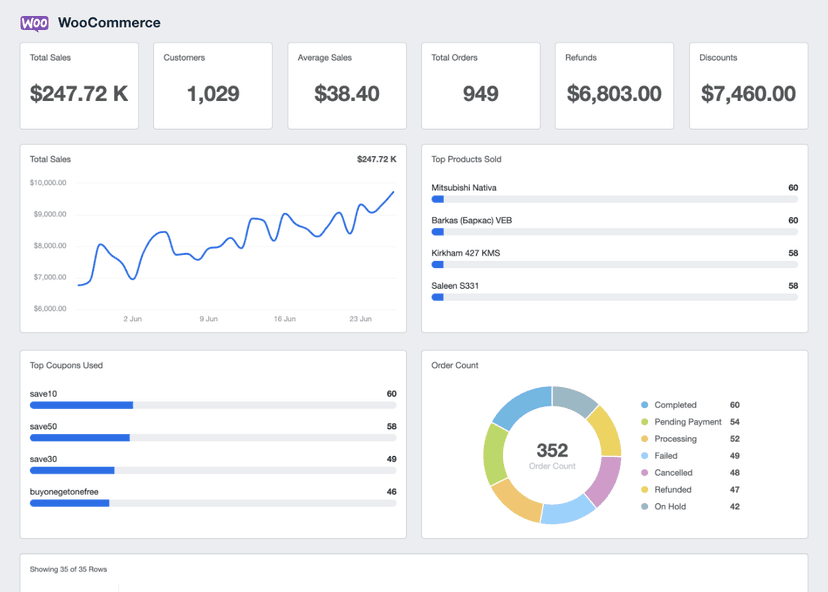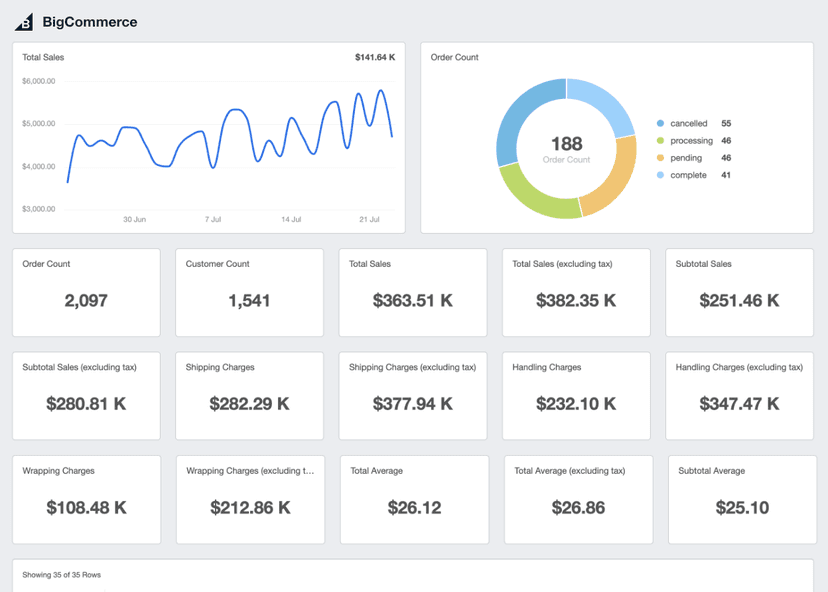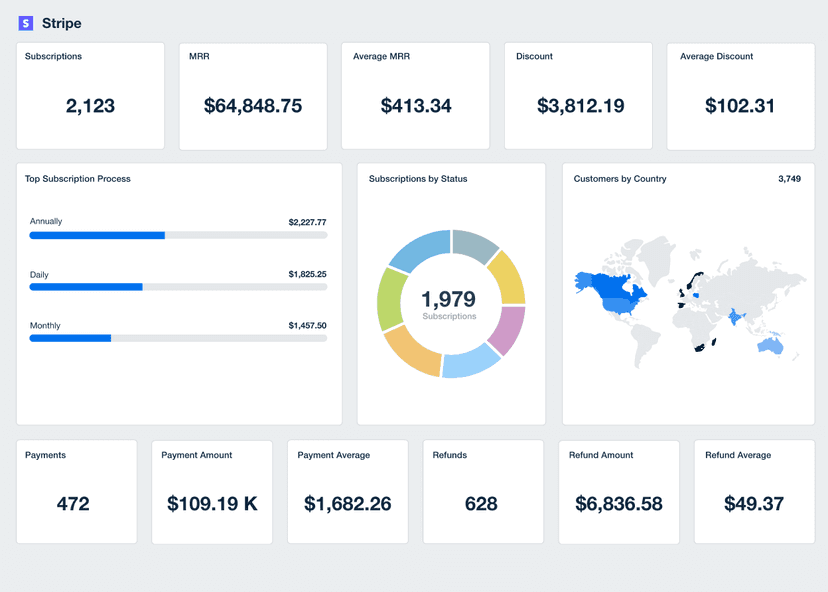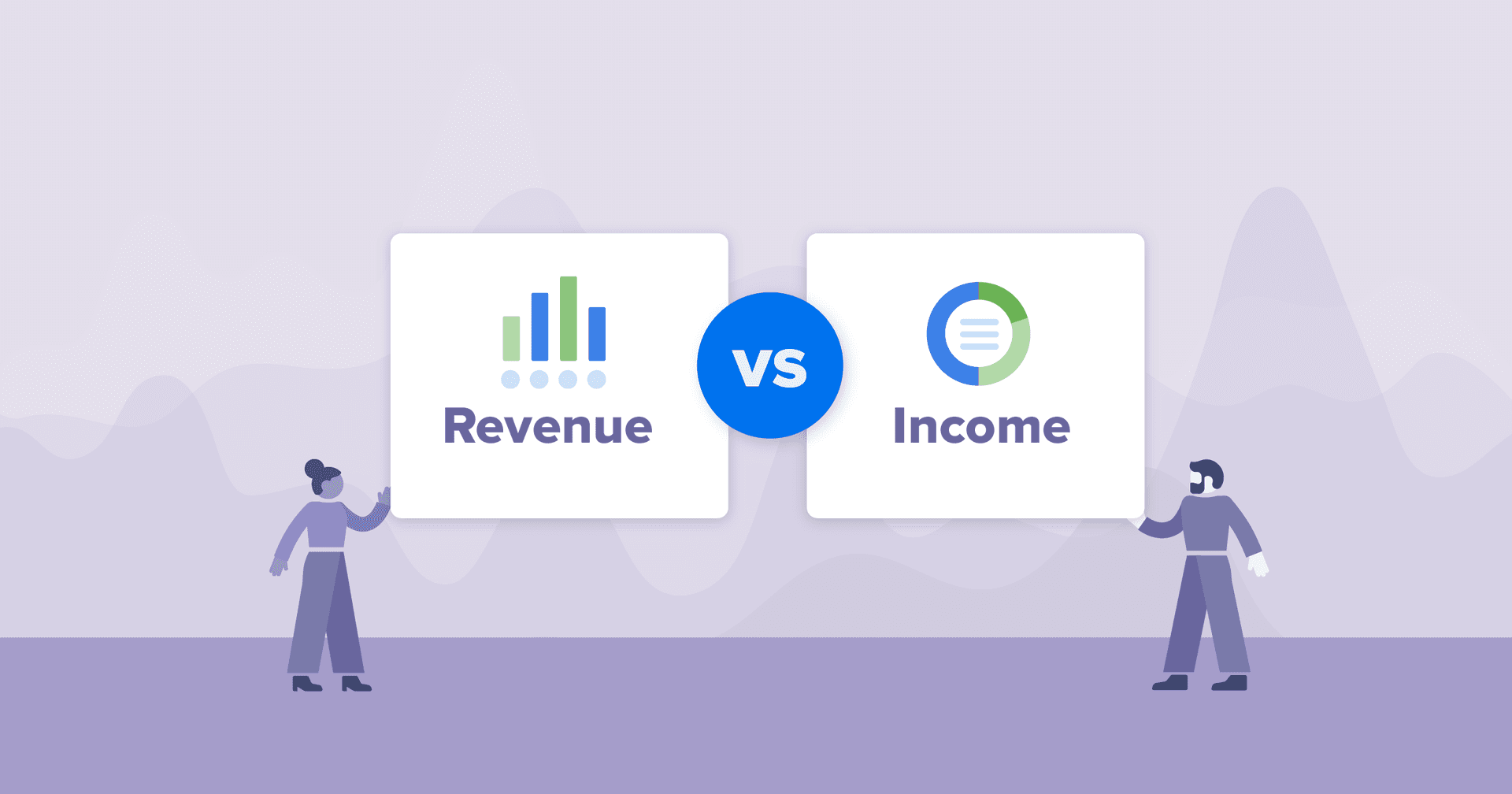Net Sales
Evaluate Revenue Trends
Analyze Net Sales figures to identify growth patterns and seasonal shifts.
Optimize Campaign Spending
Compare Net Sales revenue against marketing costs to maximize ROI efficiency.
Identify Sales Issues
Pinpoint impacts from sales returns, allowances, or discounts on overall revenue.
Showcase ROI
Highlight Net Sales in client reports to prove campaign value and success.
Why Net Sales Is Important
Net Sales is essential for understanding how much revenue a business generates from its sales activities. It accounts for deductions like returns, allowances, and discounts, offering a clear view of actual earnings.
Tracking Net Sales helps businesses evaluate the effectiveness of their pricing strategies and promotions. It highlights any issues affecting revenue, such as high returns or excessive discounts, allowing marketers to make data-driven decisions to improve profitability.
This metric also provides a reliable foundation for assessing the overall performance of marketing efforts. By focusing on Net Sales, businesses gain actionable insights into their revenue health and optimize their strategies.

Stop Wasting Time on Manual Reports. Get Ecommerce Insights Faster With AgencyAnalytics
How Net Sales Relates To Other KPIs
Net Sales is a cornerstone metric that connects directly to sales revenue, gross profit margin, and net income. It offers clarity by accounting for sales returns, discounts, and allowances, creating a reliable Net Sales figure that helps evaluate overall campaign performance.
Tracking Net Sales alongside related metrics like Customer Acquisition Cost or units sold helps uncover how efficiently a business generates revenue. It also highlights the impact of pricing strategies, operational expenses, and total revenue generated on profitability.
Agencies use Net Sales to calculate Net Sales revenue and demonstrate how their efforts align with client goals. By referencing the company’s income statement and linking the Net Sales calculation to financial performance, this metric provides a clear lens to analyze marketing effectiveness and drive smarter decisions.

Key Factors That Impact Net Sales
Net Sales is influenced by several factors, including price reductions, sales discounts, and returns allowances. Frequent discounts or refunds can significantly reduce the Net Sales figure, making it essential to monitor these deductions closely.
Consumer demand and pricing strategies also play a major role. Setting an appropriate selling price for goods sold while maintaining competitive positioning helps sustain consistent revenue growth.
Operational factors, such as inventory management and marketing effectiveness, further impact Net Sales. Efficient campaigns and streamlined processes result in more successful sales transactions and fewer disruptions in revenue generation. Understanding these factors helps businesses make adjustments that improve overall sales performance.

How To Calculate Net Sales
Calculating Net Sales involves subtracting sales returns, allowances, and discounts from Gross Sales. This formula determines the actual revenue generated from sales transactions over a specific period. Tracking these deductions ensures an accurate Net Sales figure, providing valuable insight into factors that may be affecting revenue. Whether it's identifying excessive discounts or addressing frequent returns, maintaining a clear understanding of Net Sales helps businesses evaluate their performance and refine their strategies to optimize revenue.
Net Sales Formula Example
What Is a Good Net Sales Average?
A good average Net Sales figure varies by industry but typically reflects consistent revenue growth with minimal deductions. Businesses with low sales returns, allowances, and discounts often achieve a higher percentage of Gross Sales as Net Sales, indicating efficient operations and strong demand for products or services.
What Is a Bad Net Sales Average?
A bad average Net Sales figure is often characterized by frequent sales returns, excessive discounts, or allowances that significantly reduce total sales revenue. High deductions suggest issues in product quality, pricing strategies, or inefficient operations, all of which negatively impact profitability and require immediate attention.
How To Set Net Sales Benchmarks and Goals
Agencies use historical data to analyze past Net Sales figures, total revenue generated, and sales deductions such as returns, allowances, and discounts. Comparing current Net Sales calculations to previous periods and industry benchmarks reveals performance trends and helps set realistic goals.
To meet revenue targets within a budget, businesses can back-calculate required Net Sales by determining the desired net profit, direct costs, and anticipated deductions. Additionally, segmenting Net Sales revenue by product line, region, or time period uncovers trends affecting performance. Financial reports like the profit and loss statement link Net Sales to metrics such as gross profit margin, guiding data-driven decisions.
Why Net Sales Matters to Clients
Clients track this metric because it reflects actual earnings after returns, discounts, and allowances are factored in. Net Sales shows what’s left after customers take advantage of promotions, refunds, and markdowns, making it a more accurate measure of financial health.
For clients, Net Sales helps assess product pricing, discount strategies, and overall sales performance. If the Net Sales figure isn't growing, it signals that something needs to change—whether that’s adjusting marketing efforts, improving conversion rates, or rethinking customer retention strategies. A steady increase in Net Sales means campaigns are driving real revenue, not just top-line numbers that look good on paper.

Why Net Sales Matters to Agencies
For agencies, Net Sales is the ultimate receipt for marketing success. If those efforts don’t translate into revenue, clients won’t stick around. Tracking Net Sales alongside key marketing KPIs helps agencies prove that their strategies drive actual business growth, not just vanity metrics.
Net Sales also highlights which marketing channels contribute the most revenue. By analyzing Net Sales trends, agencies determine whether paid ads, SEO, email campaigns, or other efforts are delivering the highest returns. This data informs budget allocation, campaign optimizations, and client recommendations—ensuring every marketing dollar works harder and smarter.

Save Time and Streamline Your Agency’s Web Analytics Reporting
Best Practices When Analyzing and Reporting on Net Sales
A deeper look at Net Sales reveals what’s driving growth and what needs improvement. Tracking trends, comparing channels, and aligning with client goals makes insights more actionable.
Ensure Data Accuracy
Inconsistent data delivers misleading insights. Verify Net Sales figures match finance reports, accounting for returns, discounts, and allowances. Comparing Gross Sales vs net ensures a clear picture of actual revenue after deductions.
Compare Performance Across Campaigns
A campaign that drives engagement but not Net Revenue may be missing the mark. Analyzing sales per campaign helps determine which strategies lead to actual purchases and should be replicated.
Spot Trends and Unexpected Spikes
A sudden jump in Gross Sales revenue isn’t always a win if refunds or discounts offset gains. Tracking shifts over time helps separate short-term fluctuations from meaningful performance changes.
Put Sales Data in the Right Context
Raw numbers don’t mean much without a benchmark. Comparing Net Sales to industry averages, past performance, or marketing spend provides a clearer picture of success. If sales increase but profit margins shrink, that signals a different kind of issue that needs attention.
Use Visuals To Highlight Performance
Charts, graphs, and heatmaps make Net Sales trends easier to digest. Visualizing performance over time or across channels helps spot patterns and communicate insights to stakeholders without burying them in spreadsheets.
Align Sales Metrics to Business Goals
Revenue isn’t the only measure of success. Some clients may prioritize customer retention, upsells, or Average Order Value. Analyzing Net Sales alongside these KPIs ensures marketing efforts stay aligned with bigger business objectives.
Shopify Dashboard Example
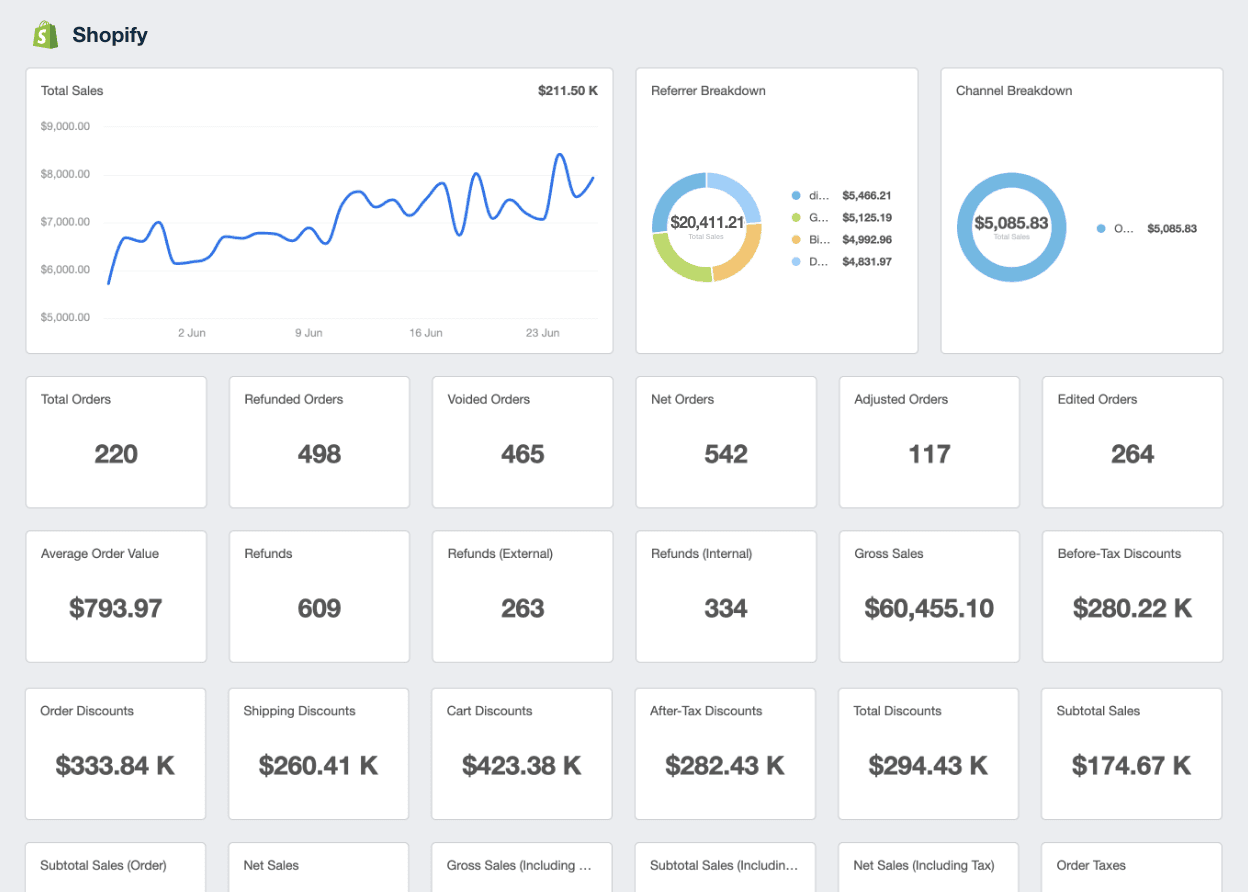
Related Integrations
How To Improve Net Sales
Increasing Net Sales comes down to smarter pricing, seamless purchasing experiences, and maximizing customer value. Small but strategic changes in marketing, promotions, and retention often lead to meaningful revenue gains. Here are three ways to drive stronger Net Sales results.
Optimize Pricing Strategy
Test price points, bundle products, and offer strategic discounts. Dynamic pricing based on demand and competitors will maximize revenue.
Leverage Retention Marketing
Repeat customers drive sustainable Net Sales growth. Use email, SMS, and loyalty programs to re-engage past buyers and increase purchase frequency.
Improve On-Site Conversions
Ensure landing pages are fast, mobile-friendly, and optimized for conversions. A/B test headlines, CTAs, and checkout processes to reduce drop-offs.
Related Blog Posts
See how 7,000+ marketing agencies help clients win
Free 14-day trial. No credit card required.


